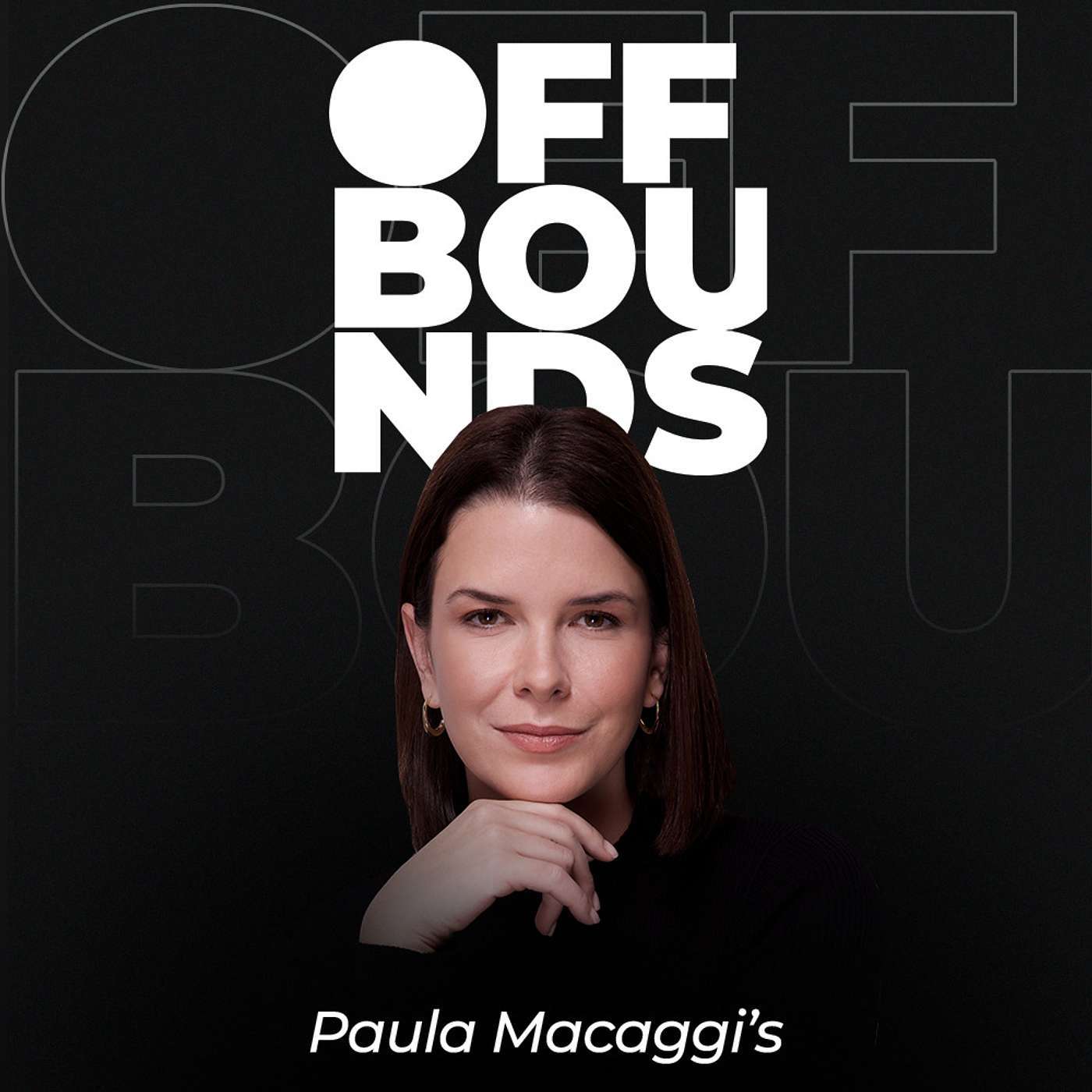
Pricing Heroes: The Retail Pricing Podcast for Practitioners & Executives
Pricing Heroes: The Best Retail Pricing Podcast for Practitioners and Executives
Your go-to pricing podcast for transforming strategy, boosting margins, and leading with confidence.
Pricing Heroes is the leading retail pricing podcast for pricing practitioners and retail executives focused on building smarter strategies, protecting margins, and earning customer trust. Each month, we feature exclusive interviews, case studies, and practical insights to help you implement the most effective pricing strategies for today’s retail environment.
Whether you're managing promotional calendars, navigating price perception, or scaling AI-powered pricing systems, Pricing Heroes offers the expert guidance and real-world perspective you need to lead with confidence.
🎙 Each episode includes:
- Expert Interviews: Candid conversations with top pricing professionals and retail innovators
- Case Study Analysis: Behind-the-scenes strategy breakdowns from across the industry
- Actionable Takeaways: Practical insights you can apply immediately in your organization
We explore the full landscape of pricing in retail — spanning e-commerce and in-store, global brands and regional players, and categories from fashion and grocery to electronics and beyond. Topics include:
- Innovative pricing technologies and emerging trends, like AI-powered pricing platforms
- Data-driven consumer behavior analysis
- Strategic solutions to complex pricing challenges
- Tactics to boost profit margins and market share
- Pricing topics making headline news
- Building and transforming pricing functions
Join a growing community of pricing professionals and industry leaders who tune into Pricing Heroes — the trusted pricing podcast for anyone shaping the future of retail strategy.
🗓 New episodes drop the last week of every month.
📲 Listen on Spotify, Apple Podcasts, Google Podcasts, or your favorite platform.
Sponsored by Competera — the leading pricing platform empowering retailers with AI-driven, customer-centric pricing solutions that maximize profitability while strengthening customer loyalty.
Pricing Heroes: The Retail Pricing Podcast for Practitioners & Executives
Behavioral Economics and the Truth About Pricing with Melina Palmer
In this episode of Pricing Heroes, we dive deep into the fascinating world of behavioral economics with Melina Palmer, the founder and CEO of Brainy Business, a consultancy dedicated to applying behavioral economics principles to business growth. Melina is also the author of three insightful books, including The Truth About Pricing, which is the focus of our discussion for this episode. With a background in marketing and brand strategy and a master's degree in behavioral economics, Melina brings a unique perspective on how businesses can leverage behavioral science to enhance their pricing strategies.
Recommended Resources
- The Brainy Business podcast
- Using Behavioral Science by Nancy Harhut
- Mixed Signals by Uwe Gneezy
Connect with Melina
To learn more about Melina Palmer and her work, visit her website at TheBrainyBusiness.com, where you can find her books, podcast episodes, and information about consulting services. You can also connect with her on LinkedIn or on other social media platforms as @TheBrainyBiz on Twitter, Instagram and YouTube.
----------
Get your free copy of Get Ready for the Future Of Pricing with our A-Z Guide.
For more information about AI pricing solutions, check out our Corporate sponsor Competera.ai.
Aaron: Hello, and welcome to Pricing Heroes, a podcast sponsored by Computero. This series features interviews with top retail pricing experts driving bottom-line metrics for major retail brands and the industry as a whole. Today’s guest is Melina Palmer. Melina is the founder and CEO of Brainy Business, a consulting firm that helps businesses apply principles of behavioral economics to achieve growth. She is the author of three books, including What Your Customer Wants and Can’t Tell You, What Your Employees Need and Can’t Tell You, and the book we’ll be discussing today, The Truth About Pricing. Melina is also the host of the award-winning Brainy Business Podcast. Melina, welcome to the show.
Melina: Thanks for having me.
Aaron: It’s great to finally have you on the show. I’ve been a huge fan of your podcast, and I’ve really enjoyed reading your books. I’m looking forward to discussing them with you today.
Melina: Thank you! I’m delighted to be here.
Aaron: Before we dive into the topic of pricing, can you tell us a little about yourself and how you became interested in applied behavioral economics?
Melina: Sure! My background is in marketing and brand strategy. During my undergrad, there was one section of one book in a class that talked about buying psychology and why people do what they do. I thought it was the most amazing thing I had ever read. I knew then that I wanted to get a master’s in this field—it was so cool! I hadn’t really considered higher education beyond a standard bachelor’s degree at that point, but I was hooked. I spent the next ten years calling universities around the U.S., but they all said that this field didn’t exist. They didn’t have any programs in behavioral economics. Some suggested I create a program, but I wasn’t inclined to pay for something I would have to design myself.
So, I went into the industry and spent ten years working in marketing. Eventually, I stumbled upon behavioral economics while participating in an innovation fellowship. The fellowship introduced me to the work and research being done in this field, and I realized it was exactly what I had been searching for all those years. I quickly found a master’s program in behavioral economics and pursued it from there.
Aaron: I’m curious—what specific application of behavioral economics first piqued your interest?
Melina: Back in my undergrad, it was just the general concept of buying psychology that fascinated me. I don’t remember the exact details, but I found the idea of combining psychology with business really compelling. I had previously considered studying psychology or psychiatry before choosing business, so discovering a field that merged the two was exciting.
Later, during the fellowship program, I was introduced to a range of behavioral economics research. One study from Duke University's Center for Advanced Hindsight, led by Dan Ariely, really stood out to me. The study was focused on increasing savings behaviors in Kenya. They tested various approaches, including sending text messages that seemed to come from the participants’ children, thanking them for saving for their education. These social proof reminders were interesting, but the most surprising result came from a simple intervention—a gold coin that participants could scratch off each week to track their savings. This gold coin approach outperformed even matching funds, which are typically expensive to implement.
For my master’s thesis, I extended this gold coin experiment in the U.S. by creating a refrigerator magnet with a similar scratch-off design. Dan Ariely was kind enough to offer advice on how to adapt the research. Although our study was less controlled, we did see an increase in savings behaviors and loyalty scores at the credit union where we conducted the experiment.
Aaron: That’s a really cool study. It reminds me of Richard Thaler’s Save More Tomorrow program, which takes a different approach but also focuses on nudging people toward better savings habits. What I find fascinating about your study is how a simple, non-coercive nudge can be so effective. It’s great that this approach appeals to emotions without feeling as forceful as automatic enrollments.
Melina: Exactly. One of the things I love about behavioral economics is how it acknowledges the complexities of human behavior. Not every intervention works the same way for everyone, and context is crucial. For example, in Kenya, they used actual gold coins that people carried around with them. In the U.S., that wouldn’t be as effective. So, we adapted the concept with a refrigerator magnet—something people see every day without consciously thinking about it. It serves as a continuous nudge, which is harder to ignore than an app notification, for instance.
When applying behavioral science, it’s important to consider the context. What works in one place or with one group may not work elsewhere. The Save More Tomorrow program you mentioned is a great example of leveraging behavioral insights for good. It allows people to pre-commit to saving more when they get a raise, taking advantage of their cold-state rationality before the hot state of wanting to spend takes over. Understanding these dynamics allows us to design better interventions that align with how people naturally behave.
Aaron: Absolutely. I could talk about behavioral economics all day, but let’s pivot to pricing. What inspired you to write The Truth About Pricing?
Melina: Pricing is one of those areas that people tend to dread, especially in small businesses. It’s often seen as a necessary evil. Many people procrastinate on setting prices because they’re unsure of how to do it. They might end up choosing a price just before launch, perhaps undercutting the competition or doing a simple markup without considering all the costs. And then they think, "I’ll revisit this later," but often, that later never comes.
I wanted to write a book that would help people feel more confident about pricing. There’s so much value in having a solid pricing strategy. It can make your product more attractive and profitable, creating a win-win situation for both the business and its customers. My goal was to give people the tools to approach pricing with confidence, using science to back their decisions.
Aaron: I have to say, I really appreciated your book. I don’t have much experience in pricing, but I do have a background in marketing, communications, and UX design. I found your book to be incredibly practical. It’s laid out in a way that someone with no prior knowledge of pricing can go from zero to implementing a solid pricing strategy. At the same time, it offers valuable insights for those who want to think differently about pricing, even if they already have some experience. It’s a great resource for anyone looking to understand pricing from a holistic perspective.
Melina: Thank you! All of my books are focused on applied behavioral economics. The Truth About Pricing is as close as I could get to a “just do it for me” guide. It walks you through the steps—do this, then do that, answer these questions, and so on. The title of the book, The Truth About Pricing, refers to the fact that it’s not actually about the price itself. It’s everything that happens before the price is presented that matters most. The book covers the psychology and behavioral insights you need to consider before you even get to the price tag. There’s only one chapter on numbers, and even then, I don’t tell you what your price should be—it depends on so many factors.
Aaron: Exactly. You’ve already touched on my next question, which is, what is the truth about pricing? One of the things I love most about your book is that it emphasizes something unique that isn’t often explored in detail within the pricing space. Many specialists discuss pricing as if certain elements that precede the price itself are a given. But in your book, you explicitly state that it’s really about value perception. Could you elaborate on this concept of value? You provide great examples in the book—perhaps you could explain why you think it’s more about value than the price itself?
Melina: Sure. There’s a bit of a caveat here because I also talk about the need for brands to decide whether they’re going to be built on value or quality. Everyone can provide value, but it’s crucial to understand what the buyer cares about—what they truly value. What are you actually providing them? Often, it’s not just the good or service itself. There are many other factors at play. For example, I might buy a particular brand of bag or car because of what it says about me and my identity. It’s about being part of a group, about social proof and status, and in today’s world, about posting pictures on social media from a certain trip, restaurant, or event.
These elements are all part of the value someone gets beyond the actual utility of the item. At the end of the book, I discuss several case studies, including one about the Hermès Birkin bag. Functionally, a grocery bag could serve the same purpose, right? But people pay tens of thousands, even hundreds of thousands of dollars for a Birkin. The value isn’t in the bag’s functionality. It’s about what it says about the owner—being able to afford one, the status it confers, the exclusivity.
There are many fascinating aspects to this. For instance, it’s not just about having enough money; you have to spend enough with Hermès throughout the year to be nominated by a sales associate to even have the chance to buy a $10,000 bag. You don’t get to choose the color or customize it—you simply take the bag they offer. And people do it, eagerly. There’s a huge resale market for these bags because of their limited availability and the status they convey.
Now, if you’re selling something like marketing or accounting services, the people looking to buy don’t have the skills you have. This creates a challenge with pricing because what’s intuitive to you—how you design a layout or write copy, for example—isn’t easy for them. They might charge a significant amount for their own services, but what you provide is invaluable because it saves them time and effort. The value they receive is beyond just the cost per hour.
Aaron: I really like that example. It’s one of those perfect cases where a price might seem irrational to an economist but holds tremendous value for the ideal customer of that brand. It highlights how decisions are often driven by who we are—our identity, our needs—not just by the numbers. That can vary wildly depending on your community, demographic, and many other factors. I think it’s a phenomenal case study for that principle of behavioral economics. And your book is full of other great case studies as well.
Melina: Thank you. Another great example that comes to mind is Supreme. They take something, slap their logo on it, and charge a premium for it. Supreme uses scarcity to create demand, like with their Pyrex measuring cup. The standard Pyrex cup costs about five dollars, but Supreme sold theirs for around 25 dollars, and they sold out instantly, as their products usually do. Supreme’s approach is brilliant—they create extreme scarcity and form unique brand partnerships, like with Louis Vuitton, but also with everyday items like MetroCards, bricks, and crowbars. These items are marked up significantly, yet people buy them eagerly.
When I was researching for the book, I found that Supreme’s measuring cups were being resold for hundreds of dollars, despite being virtually identical to the standard Pyrex cup, down to the red color of the logo. But for those who care about the brand, these items hold significant value. I even read an article suggesting that grandparents should invest in these items to impress their grandkids!
Aaron: Yeah, I don’t think my grandparents would care if I think they’re cool or hip.
Melina: Right, not enough to pay a hundred dollars for a measuring cup you could get for five dollars, for sure.
Aaron: I found that case study so interesting because it was the first time I’d heard about the brand. But it makes perfect sense, especially in today’s social media age. You drop a product with limited supply, and it’s first-come, first-served. It’s a brilliant combination of leveraging new social engagement opportunities with a quality business model and turning a profit.
Melina: Absolutely. And it’s fascinating how these resale markets develop, almost creating sub-brands within the larger brand. You see this with Pokémon cards, baseball cards, and stamps, where entire subcultures and resale markets emerge. Now, with platforms like YouTube, people watch others open packs of cards. It’s all about the anticipation—what might be inside? That uncertainty triggers dopamine and keeps people engaged.
This concept of surprise and delight is powerful. We enjoy the unknown, and when you apply it to your brand, it can increase loyalty and repeat purchases. If customers know they might get something special, they’re more likely to buy again. It’s essential to understand how the buying brain works because when you’re in product development mode, you’re using a different part of your brain that doesn’t fully grasp the decision-making process of the buyer.
Aaron: We’ve talked about examples of quality brands like Hermès and Supreme, but let’s shift to the other end of the spectrum—Costco. Their pricing model seems counterintuitive. Instead of maximizing profits on each item, Costco follows an entirely different strategy. Can we talk a bit about Costco’s approach?
Melina: I love Costco, and I have a whole episode dedicated to them on my podcast. I also cover them extensively in my book. As I mentioned earlier, brands need to decide whether they’re going to be value-driven or quality-driven. For value brands, it’s about being associated with discounts, deals, and savings—Costco and Walmart are prime examples.
Costco is masterful at conveying that they’re working for their members to secure the lowest possible prices, even if it means losing money on some key items. For example, their $1.50 hot dog and soda combo and their rotisserie chickens, which they’ve promised never to raise the price on, are significant loss leaders. Costco loses between $30 and $40 million a year on those chickens alone. But they’re doing fine—they make up for it on other items.
Costco’s entire shopping experience reinforces their value proposition. The warehouse setting, the simple website design—it all tells you that they’re not wasting money on flashy advertising or unnecessary frills. They’re focused on getting the best deals for their members. They also use scarcity and loss aversion effectively. If you see something you like at Costco, you buy it because you know it might not be there next time. This drives people to add more items to their carts, knowing they can return them if they change their minds.
In the book, I guide readers on how to apply these concepts depending on whether they’re a value or quality brand. Costco is a fantastic example of a value brand that uses behavioral economics principles to create a compelling shopping experience.
Aaron: It’s amazing how much pricing affects businesses of all types and sizes. I had a friend who started a photography business focusing on weddings, engagements, and special occasion photography. After about six months, they were struggling to get new clients and couldn’t figure out why. They ended up hiring a consultant who reviewed their business and told them something that seemed absurd at first: the reason they weren’t doing well was that they weren’t charging enough. The consultant explained that when people are looking to hire a wedding photographer, they want to feel like they’re hiring someone who will provide top-of-the-line service for such a special day. They don’t want to take a risk on someone they perceive as a budget photographer rather than a quality one. So, they increased their prices—though it felt ridiculous to them at the time—and suddenly, business took off. They ended up having to hire additional staff to support the demand. It’s a great example of how important it is to understand your market segment, decide what type of business you want to be, and price accordingly.
Melina: Absolutely. And the confidence piece when stating your price is crucial. When you go through the process of raising prices, especially if you think no one will want to pay more, it can be really scary. For your friends, going from, say, $2,500 to $10,000 might have felt physically painful the first time they quoted it. And I can relate—I’m still human, and I’ve had to fight my own internal resistance when raising prices.
It’s important to state the price confidently, almost like you’re mentioning the time of day or the weather. For example, saying, “We offer this package for $10,000, and most clients choose this option,” in a calm and assured tone is very different from saying, “I know it’s expensive, but it’s $10,000… but if that’s too much, we can offer a discount or maybe bring it down to $8,000, or even $5,000…” When you start apologizing for the price or offer discounts immediately, you undermine the value of your service. The price didn’t change, but how you talk about it makes all the difference.
Toward the end of the book, I discuss concepts like anchoring and relativity. If your goal is to sell a $10,000 photography package, for example, it’s crucial how you structure your other offerings. Many people start with lower-priced packages—$2,500, $5,000, and then $10,000—and then wonder why no one chooses the $10,000 option. The issue isn’t the price; it’s how it’s being presented.
I advise creating what I call a “wingman” for your best offer. This is a higher-priced package that is clearly of lesser value in comparison, but still something you’d be willing to offer if someone chose it. For instance, your friends could create a $19,000 “luxury” package that includes extra services like a drone, a videographer, and a personal assistant for the bride. Then, when they mention the $10,000 package, it seems more reasonable by comparison.
This approach makes the $10,000 option feel like a good deal, especially when presented after the higher-priced package. Starting high and working your way down changes the perception of value. And always ensure that if someone does choose that higher-priced “wingman” package, you’re happy to deliver on it because you might be surprised at how often it gets selected.
Aaron: That’s a great point, and we see this across various brands. Apple’s tiered pricing strategy comes to mind, as well as the way restaurants price wine. Consumers are very sensitive to how prices are presented. I’d like to pivot to a couple of topics that have been in the news recently and see if you can offer some insights from a behavioral economics perspective.
Recently, a few brands have made headlines for implementing real-time dynamic pricing, which has caused some concern among consumers. They’re worried about prices fluctuating throughout the day and feel it could lead to them being taken advantage of. If you were advising one of these brands on using dynamic pricing, are there behavioral economics strategies that could help mitigate consumer concerns while still allowing the brand to optimize pricing?
Melina: Real-time dynamic pricing, like what we see with hotels, airlines, and even Uber, is a complex area that relies heavily on algorithms and expert systems. However, even the best algorithms can sometimes lead to missteps that upset customers. What’s interesting is that the things people say they care about—like transparency—aren’t always what actually influences their behavior. Over-disclosing can backfire because it reveals too much of the process, making people uncomfortable.
Take Uber’s surge pricing, for example. Conceptually, we understand that when there are fewer drivers, prices might be higher because demand exceeds supply. If you really need a ride, you can choose to pay more; if not, you have the option to walk or wait. That makes sense. But how this is communicated can make all the difference.
A classic example is Coca-Cola’s attempt to implement temperature-based pricing in vending machines, where prices would rise on hot days. When they told customers, “We usually charge 75 cents, but on hot days it will be a dollar,” people were outraged. However, if they had framed it differently—saying the standard price is a dollar, but on cooler days they would offer a discount to 75 cents—it might have been received much more positively. The pricing structure is the same, but the way it’s presented changes the customer’s reaction entirely.
So, when implementing dynamic pricing, brands should think carefully about how they frame it. Instead of focusing on how the price might increase, they could emphasize the benefits and occasional discounts that come with it. It’s about taking a step back and finding a way to reframe the pricing that aligns with how people naturally think and feel.
Aaron: That’s great. There’s another recent news story I’d like to touch on—the FTC announced a few weeks ago that they’re investigating “surveillance pricing.” I’m not sure if you’ve seen these headlines, but essentially, they’re looking into companies using AI algorithms to optimize prices for individual buyers. Naturally, people are concerned that companies might be using this data to target them with prices designed to extract the most profit based on their buying behavior.
However, if you think about how this could be framed from a brand perspective, it might be presented as something like a loyalty program. Instead of saying, “We’re tracking all of our customers’ purchasing behaviors,” the company could offer something like, “We’re providing an opportunity to enroll in a membership program that gives you access to exclusive discounts and early access to sales tailored just for you.” Framing is critical here—especially in pricing—because how you present something can make all the difference in how it’s received.
Melina: Absolutely. I like that approach. When pricing starts to edge into what feels like price gouging, it’s important to take a step back. If you wouldn’t feel good about explaining your pricing strategy to your customers, then it’s probably not a strategy you should pursue. Let’s be ethical and reasonable—if you wouldn’t want to tell a customer that you’re charging them more just because you think they’ll pay it, then don’t do it. It’s about being thoughtful and maintaining a good relationship with your customers. If you’re comfortable with everyone knowing what you’re doing, then you’re likely on the right track.
Aaron: I agree. It’s crucial to empower the customer with the option to opt in or out.
Melina: Exactly. People are generally okay with sharing some information, like giving a phone number, if it means they’ll get a discount or other benefits. But if it’s just so you can charge them more, they’re not going to be happy. It’s important to remember that businesses need to make a profit, but as consumers, we should also be thoughtful about what we’re agreeing to. It’s always worth taking a moment to consider why a company is asking for certain information, and actually reading those disclosures can be enlightening.
Aaron: Right. It’s about measuring the value and determining if it aligns with your needs or expectations. Great. Final question—what books, podcasts, or other resources would you recommend to our community of pricing professionals?
Melina: Well, of course, I’d recommend The Brainy Business podcast if you’re interested in behavioral economics and behavioral science. Another great resource is Nancy Harhut’s book Using Behavioral Science in Marketing. She’s fantastic, and her book is full of valuable insights.
The Coca-Cola example I mentioned earlier is from a book called Mixed Signals by Uwe Gneezy, which is also a really interesting read. It explores how incentives can sometimes backfire and why it’s important to think carefully before implementing them. I could go on and on with book recommendations, but I’ll stop there!
Aaron: Great suggestions. And how can people get in touch with you?
Melina: You can find all my books, the podcast, and information about consulting on my website, thebrainybusiness.com. I’m also on social media as @TheBrainyBiz—B-I-Z—on most platforms, and you can find me as Melina Palmer on LinkedIn.
Aaron: Perfect. I’ll make sure to include all those links in the show notes. Melina, thank you so much for being on the show. I really enjoyed our conversation, and I appreciate you sharing your insights with us today.
Melina: Of course. Thanks for having me!
Podcasts we love
Check out these other fine podcasts recommended by us, not an algorithm.

Pricing Evolution Podcast
Brendan Hodge
Impact Pricing
Mark Stiving, Ph.D.
Remarkable Retail Podcast
Michael LeBlanc, Steve Dennis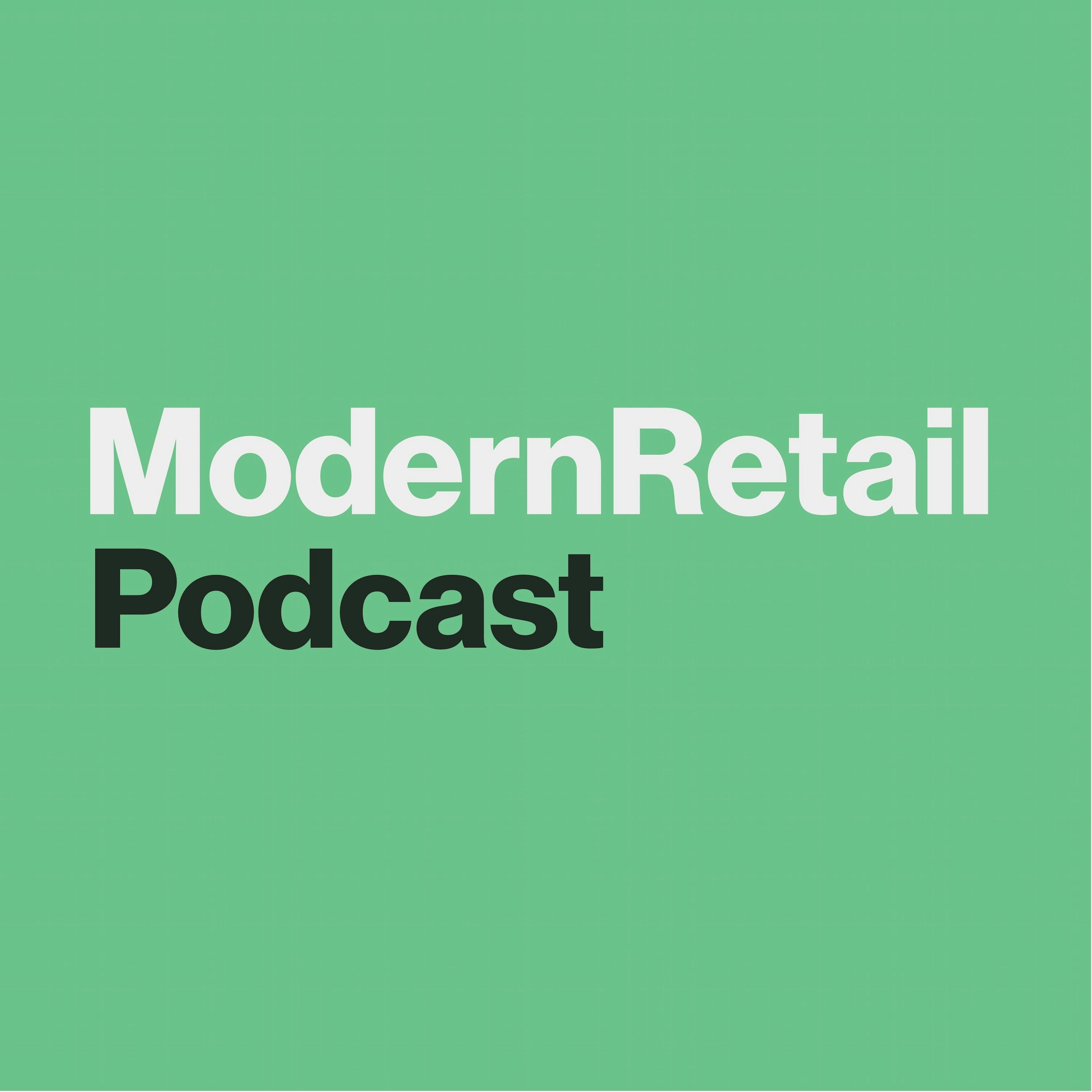
The Modern Retail Podcast
Digiday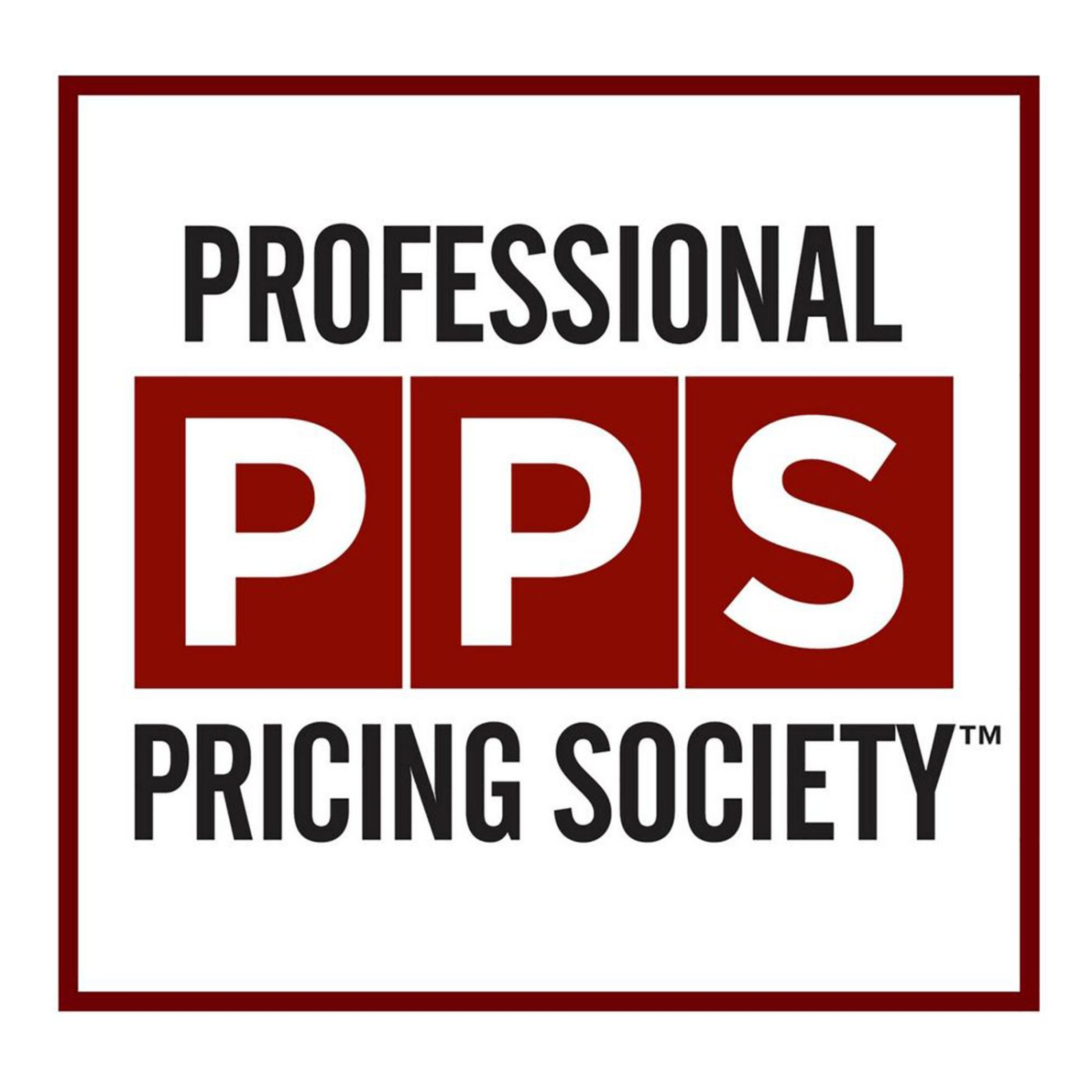
Let's Talk Pricing Podcast
The Professional Pricing Society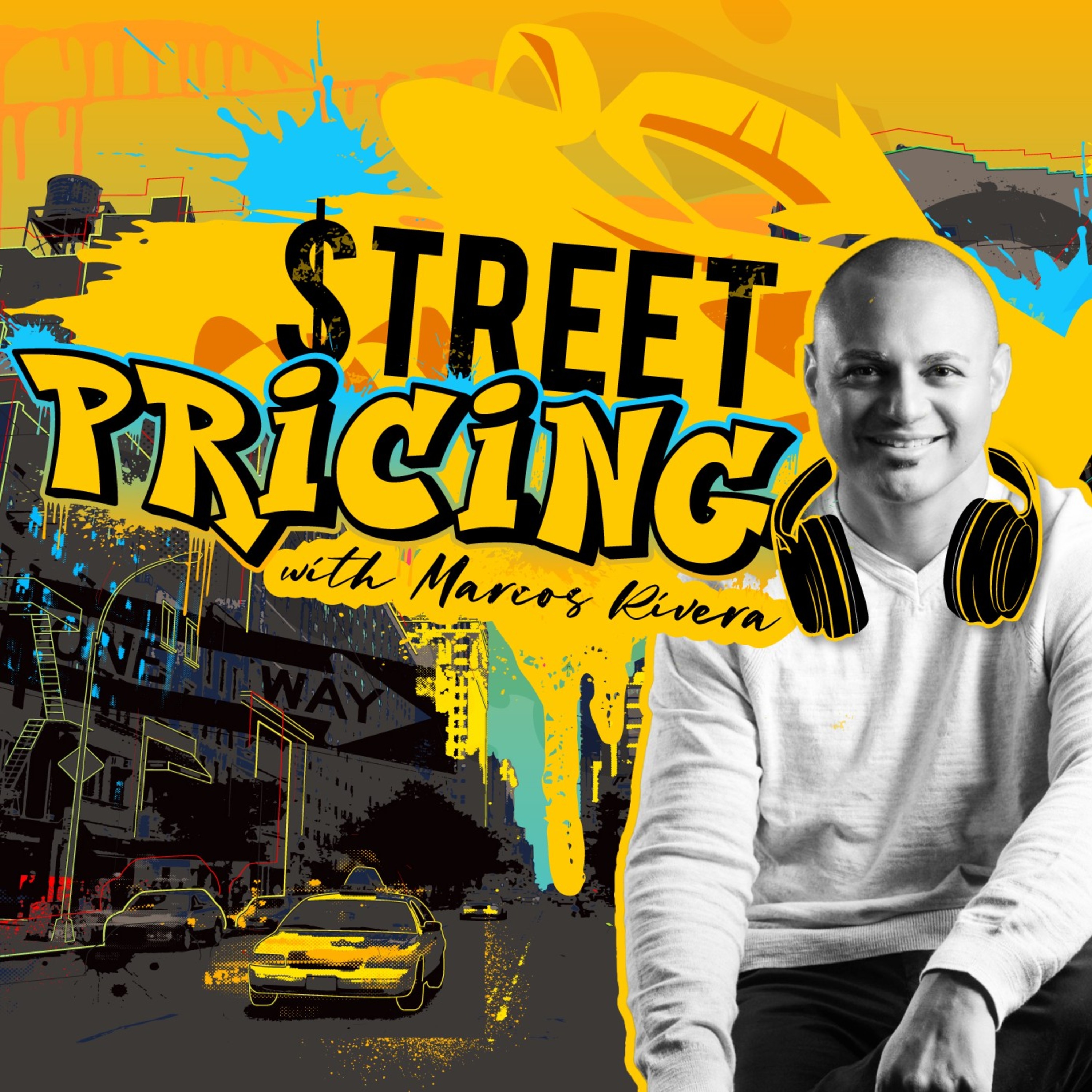
Street Pricing with Marcos Rivera
Marcos Rivera
Rooted in Retail
Crystal Vilkaitis
The FMCG Guys
Dwyer Partners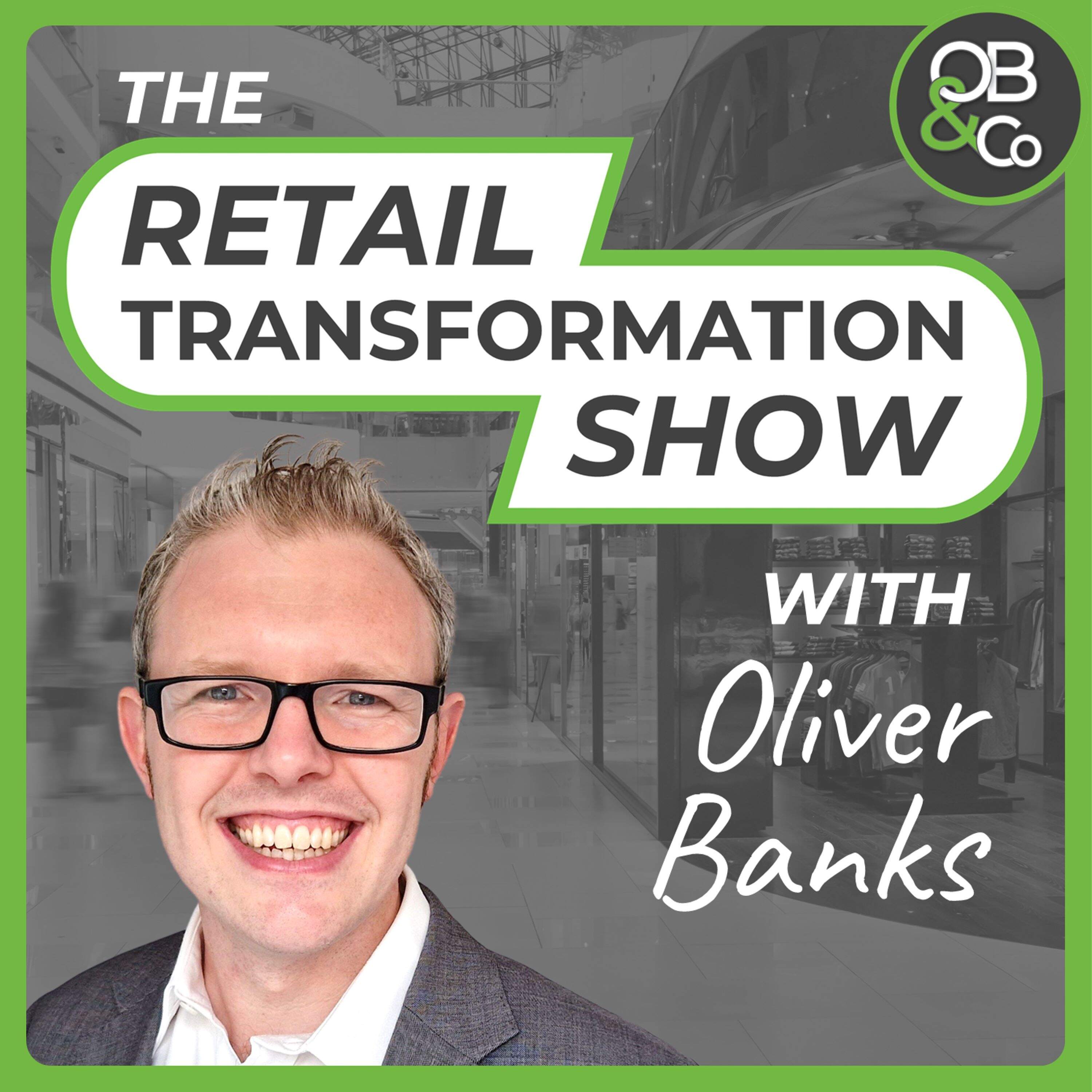
Retail Transformation Show with Oliver Banks
Oliver Banks